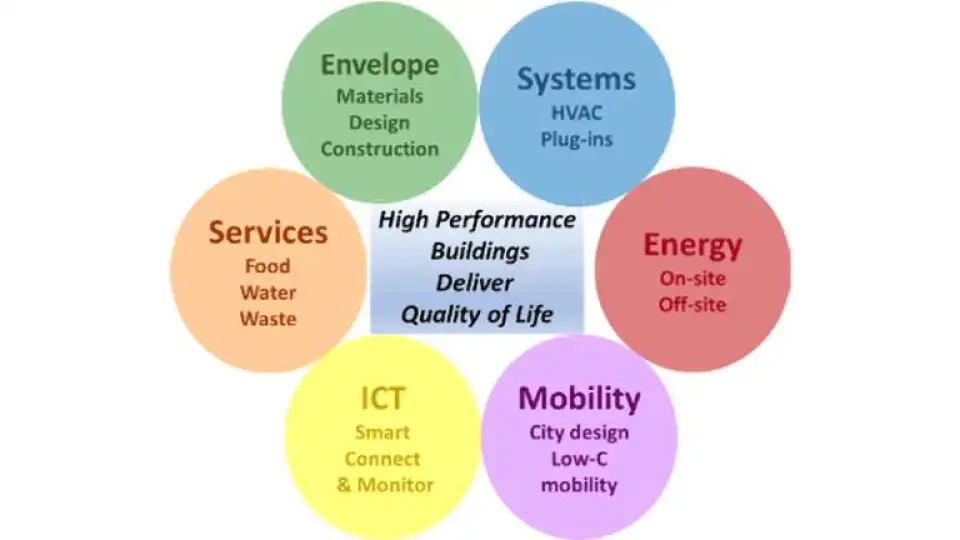
Shutting down the world’s economy because of the coronavirus has led to implosion of many sectors, starting with those sectors related to travel at the outset but spreading increasingly across economies. Technology and network solutions underpin specific, newly robust business models, but for most other sectors unemployment is soaring and many product supply chains are showing signs of strain in production, transformation, transportation and/or distribution. Government financial support for economies is both essential and fragile. There is tension between the perceived need to re-open or re-launch economies, a process that has begun tentatively, and the advice from health experts to maintain economic lock-downs and social distancing until the pandemic has been contained.
Plummeting demand for products at some point will lead to drops in prices. As that effect becomes generalized, an economy will move into a deflationary, self-reinforcing spiral as people delay purchases in anticipation of lower prices. The current drop in demand has been imposed by (hopefully) ephemeral policies to contain the coronavirus rather than any secular economic trend. Will pent-up demand burst out when the lock-down ends? If multiple months of demand were to be unleashed in a short-term spending orgy then financial and product markets would move from deflation to inflation very rapidly until a new economic equilibrium among products and services could emerge. Conversely, if the lock-down is ended too soon, a second, larger coronavirus wave will take shape and the cycle will repeat with greater amplitude.
Shutting down the world’s economy because of the coronavirus pandemic has led to notable improvements in the environment. As industry has shuttered and movement of goods and people has stopped, the air has cleared and waters have purified. Pollution levels have dropped everywhere, whether smog in Los Angeles or India, particulate haze in China, or water qualities in the Adriatic. Unconfirmed anecdotes from China indicate that the number of people who have survived because of improvements in air quality is greater than the number of people who have died from the coronavirus. People have registered on the improvements in their ambient environments – see this CNN story.
Can the world take advantage of the environmental reprieve granted by the coronavirus pandemic to redirect our development path? Can the world take advantage of the economic and social imperatives imposed by the coronavirus pandemic that will oblige governments to stimulate their economies? The stimulus packages need to comprise a coordinated, global Renaissance plan that addresses the foregoing environmental, social, and economic stresses while delivering on both the 2030 Agenda for Sustainable Development and the Paris Climate Agreement and satisfying near-term considerations (health and jobs).
At the outset I thought of calling it a Marshall plan. The Marshall plan was visionary and involved rebuilding Europe’s industrial and physical infrastructure following world war 2. In doing so it succeeded in underpinning a vibrant economy because of the injection of capital and technology.
While the idea remains robust, the expression itself has become a bit cliché. Instead, I would like to baptize it a Renaissance plan. The Renaissance marked the transition from the Middle Ages to Modernity in the 15th and 16th centuries and was associated with great social change and strides forward intellectually and culturally. I believe it better reflects our tasks at hand.
We are faced with a complex set of challenges today. The first, immediate challenge is getting past the coronavirus pandemic. The second challenge is relaunching economies. The implosion of the world’s economy is extraordinary, and as confinement continues the duration of deep repercussions becomes increasing unknowable. It an urgent imperative to get the world’s economies back to work. Jobs, health, security, food, investments all depend on our getting back to work, though all the while ensuring that we do not relaunch the pandemic in the process. If we simply re-launch economies by reverting to the model that existed before December 2019, then we are simply re-treading paths that take us to the wrong destination.
This brings us to the third challenge. We have an opportunity with this pandemic to catalyze a modern renaissance, a re-birth of nations and economies in a way that delivers quality of life sustainably at global scale. I have some personal pet peeves in this regard – the need to reinvent energy as a service industry rather than the commodity industry it has always been is probably at the top of the list. But if we consider that buildings are responsible for 40% of global CO2 emissions by virtue of the energy services they require and they are where people spend most of their time, and if we realize that getting buildings “right” is at the heart of delivering quality of life globally, then our renaissance plan must be put into action. By injecting capital into the global supply chain for buildings, we put cash into the hands of the architects, engineers, carpenters, electricians, plumbers, and the like, and we re-conceive the product slate of insulation, windows, distributed renewables, hyper-effective HVAC, and domotics. We will have addressed a global sustainability challenge while delivering local economic impetus. That is the way to consider this challenge.
Build, Baby, Build
Financing new buildings and deep retrofit of existing buildings must be at the start and the heart of governments’ stimulus programs: a renaissance with jobs, innovation, and structures delivering tomorrow’s world while providing a necessary near-term economic stimulus.
The proposed program involves financing all new buildings and undertaking deep retrofit of countries’ entire building stocks according to UNECE’s principles between 2021 and 2030 through a combination of government stimulus funds and transformational green bonds.
—
Getting cash into the hands of the trades people – the carpenters, the plumbers, the contractors, the architects – and the rest of the building supply chain would reinvigorate local economies rapidly while delivering on long-term quality of life for everyone (climate, affordability, health, comfort). High performance buildings include systems, energy, and information and communication technology, so the impact of well-designed stimulus measures would be widespread.
We propose a major program of finance that addresses the foregoing environmental, social, and economic stresses while delivering on both the 2030 Agenda for Sustainable Development and the Paris Climate Agreement and satisfying near-term considerations. The program involves transforming new and existing buildings to meet the UNECE’s principles for high performance buildings. The principles apply in any climatic and regulatory environment and reflect the frontier of knowledge regarding how buildings are conceived, built, and operated, how systems deliver quality of life, and how information and communications technology enables superior outcomes.
We visited with occupants of houses in Ireland that were developed by a local contractor and that meet our guidelines. We asked what their experience was – they were ecstatic with their lower energy bills, no particulate matter to dirty the house, no drafts, no kids sick with asthma, and no mould. There is a long waiting list for social housing or low-income housing in Ireland. The people who are on that waiting list are calling the authorities to ask to be moved lower on the list because they prefer a high-performance house.
—
These principles are important because they do not work on a component-by-component basis. They deal with the building as a complex system and deliver quality of life for building occupants (see addendum below). The advantage of this initiative is that it is not just a climate issue – it is about jobs, health, innovation, comfort, and quality of life generally. The program speaks to the entire political spectrum.
Buildings are responsible for 40% of greenhouse gas emissions by virtue of the energy services they require. To meet the goals of the Paris Climate Agreement and the 2030 Agenda for Sustainable Development the quality of life and energy performance of buildings, as well as their embodied energy and carbon, must be addressed urgently. Few systematic attempts have succeeded in realizing the opportunities that exist at scale to reduce the environmental impacts of buildings over their entire life cycle and throughout their supply chain.
The program aims to apply proven best practice methods and focused technical capacity to improve building energy performance and reduce embodied carbon and energy. The program will focus specifically on improving the effectiveness of the entire building sector supply chain across multiple metrics to improve the complete lifecycle performance of buildings. The program will transform the performance of the global building sector supply chain industry and that of its products to enable delivery of high-performance buildings. The program aims to connect building performance with country commitments and targets and address the readiness of industry to deliver the needed materials, techniques, and equipment. The program will help develop building performance regulations (as well as corresponding policies, funding instruments and investment conditions); promote best practices in the building sector’s supply chain; help deploy the materials, techniques and equipment; and implement readily-available technical solutions for industry.
By supporting the national economic, social, and environmental goals and bringing multiple co-benefits for stakeholders other than just energy savings, the program will engender strong political commitment to ensure enduring implementation of developed solutions, methods and instruments beyond the end of the program. Mechanisms for tracking progress on sustainability objectives and instituting entities for training and capacity building will be established to measure progress and ensure continuous improvement.
ADDENDUM
A six-circle diagram captures the essence of UNECE’s high performance buildings:

The first circle diagram is about getting the building envelope done correctly – design, materials, and perfect construction techniques. Done right, energy requirements in the building are reduced to very low levels, levels at which the remaining energy requirements can be met with low or no carbon energy sources.
The second circle addresses systems: heating, ventilating, and air conditioning as well as water heating and plug-in equipment. The challenge is sizing the equipment to the building’s needs.
The third circle explores the energy needed to drive the systems – rooftop solar, storage in the basement, or a connection to the wind farm down the road. It is possible to source a building’s energy service requirements from low or no carbon energy sources because energy requirements have been minimized.
The fourth circle contributes to reducing the carbon intensity of mobility. It begins with proper design of urban transport systems but connects to the buildings equation through coordination of building sites with transport infrastructure and through connection of buildings energy and energy storage systems with mobility options.
The fifth circle is information communications technology. A building is a complex system embedded in a community that is in a city that is part of a national network. If those systems and information can communicate seamlessly, suddenly system optimization brings distributed generation, smart energy use, energy service providers, and consumers to deliver an efficient set of outcomes. Further, with ICT the monitoring and control of the systems, indoor air quality, and comfort levels is enabled. Demonstrably healthy and comfortable homes attract higher valuations that can support financing options.
The sixth circle on services brings in the remainder of what dwellings provide to its occupants, including water, food, and waste removal or treatment. Properly conceived, buildings can contribute substantially to each through waste re-use and recycling, water recovery and treatment, and on-site food production.
The circles represent a multitude of completely distinct communities of professionals that, when connected, can deliver outcomes far superior to and more resilient than current practice. Because this an agenda that really matters it is important to get it right.